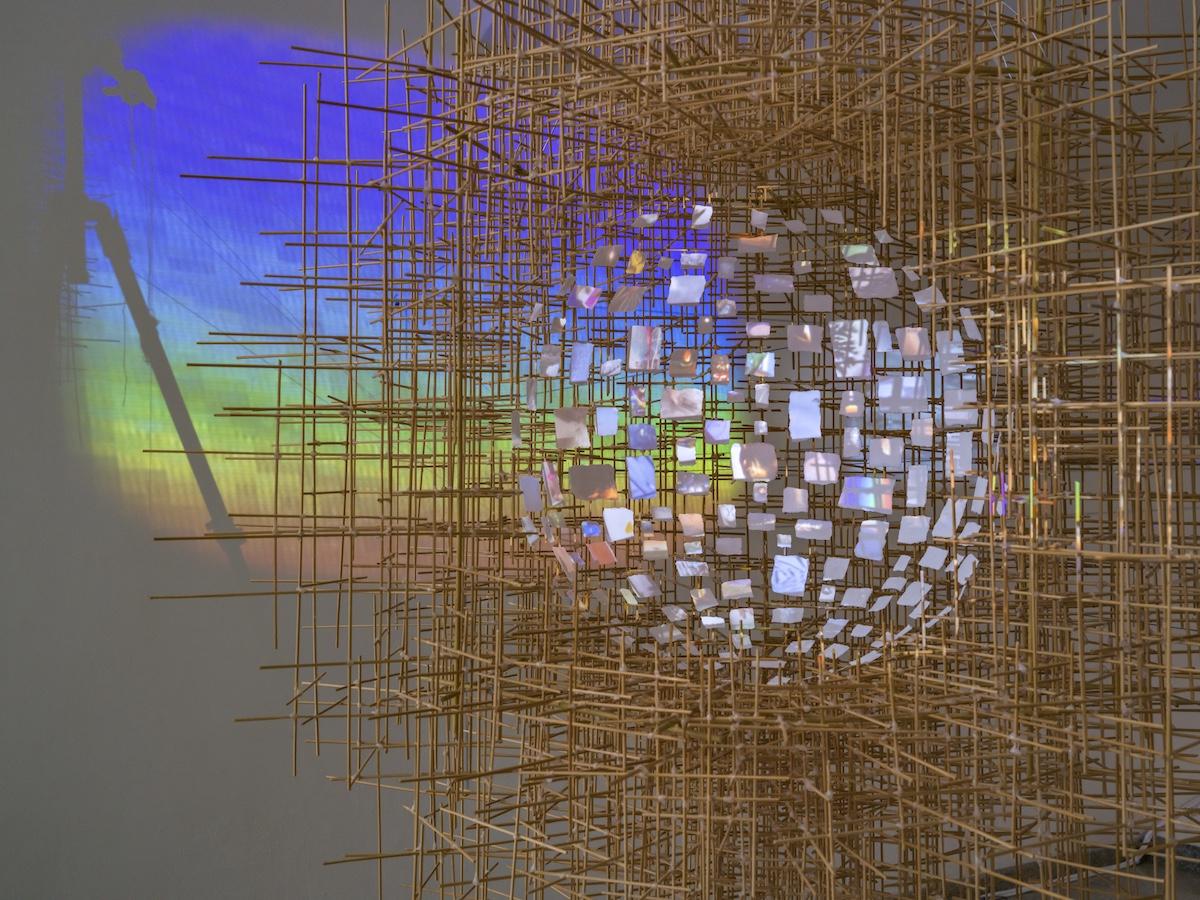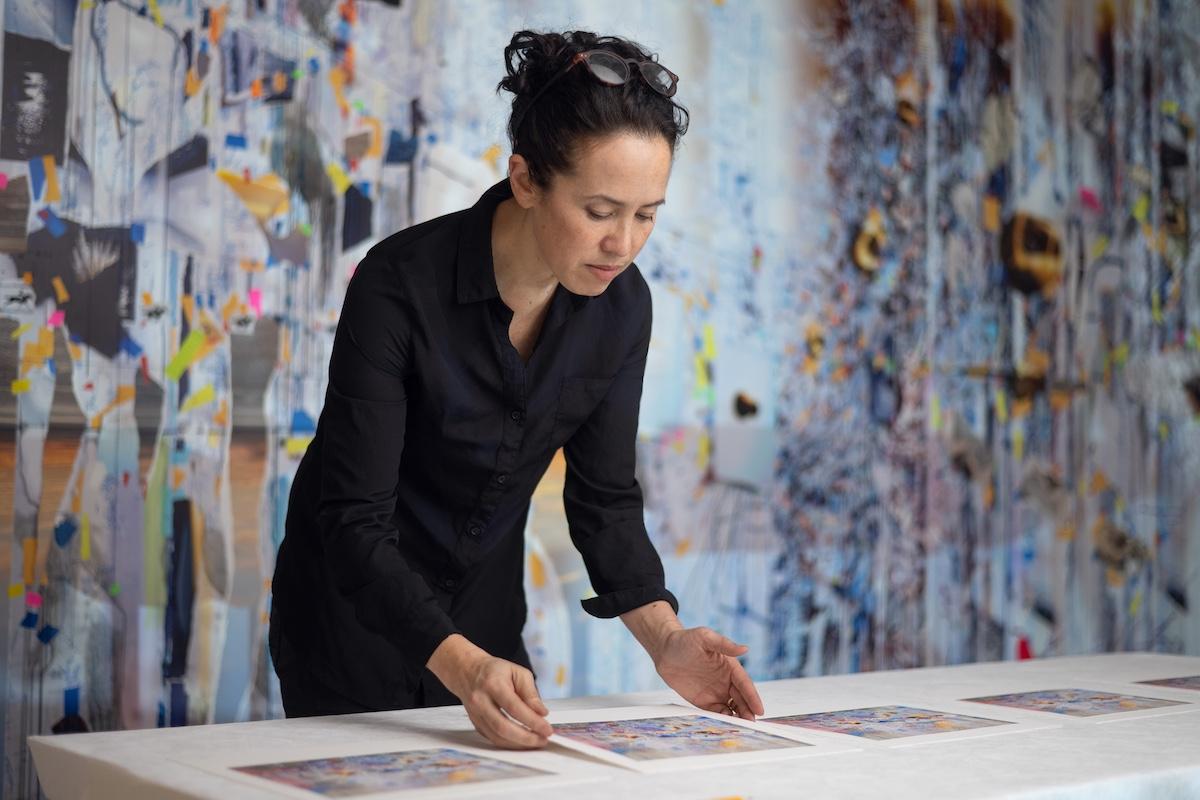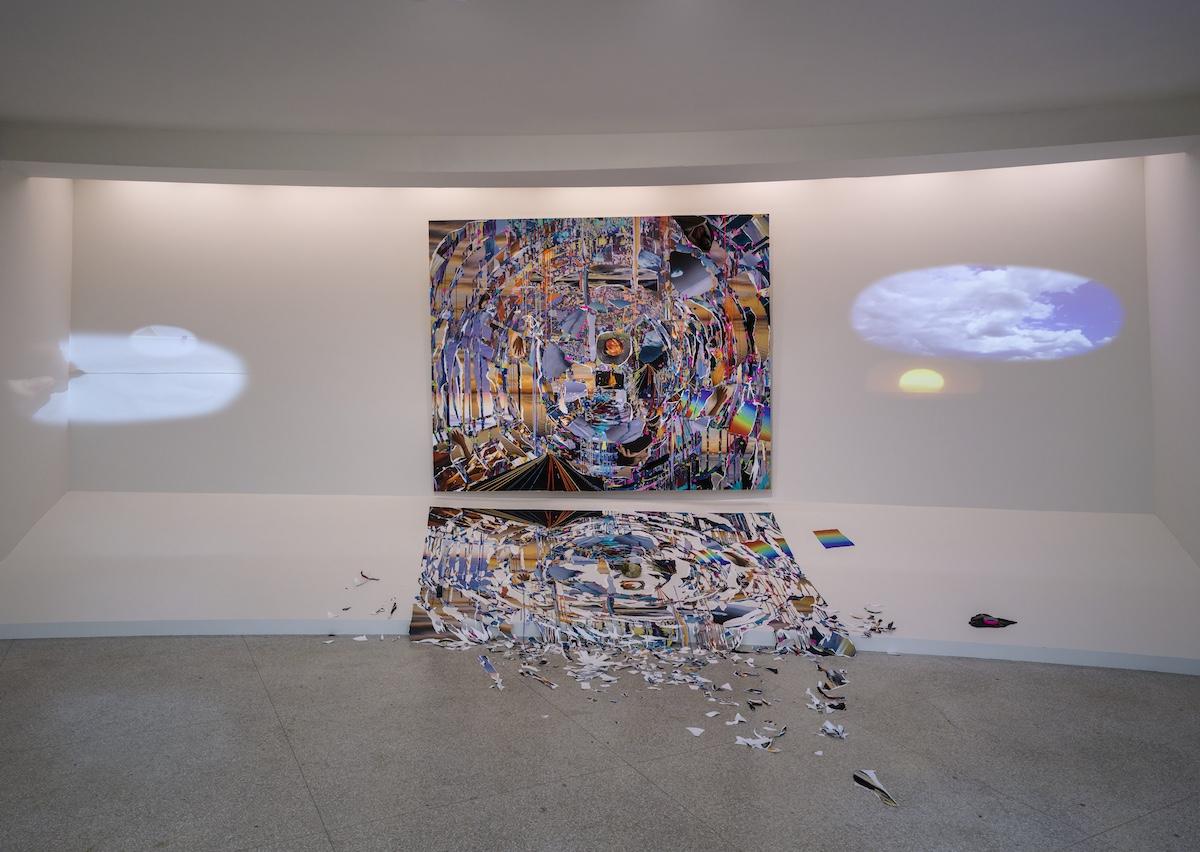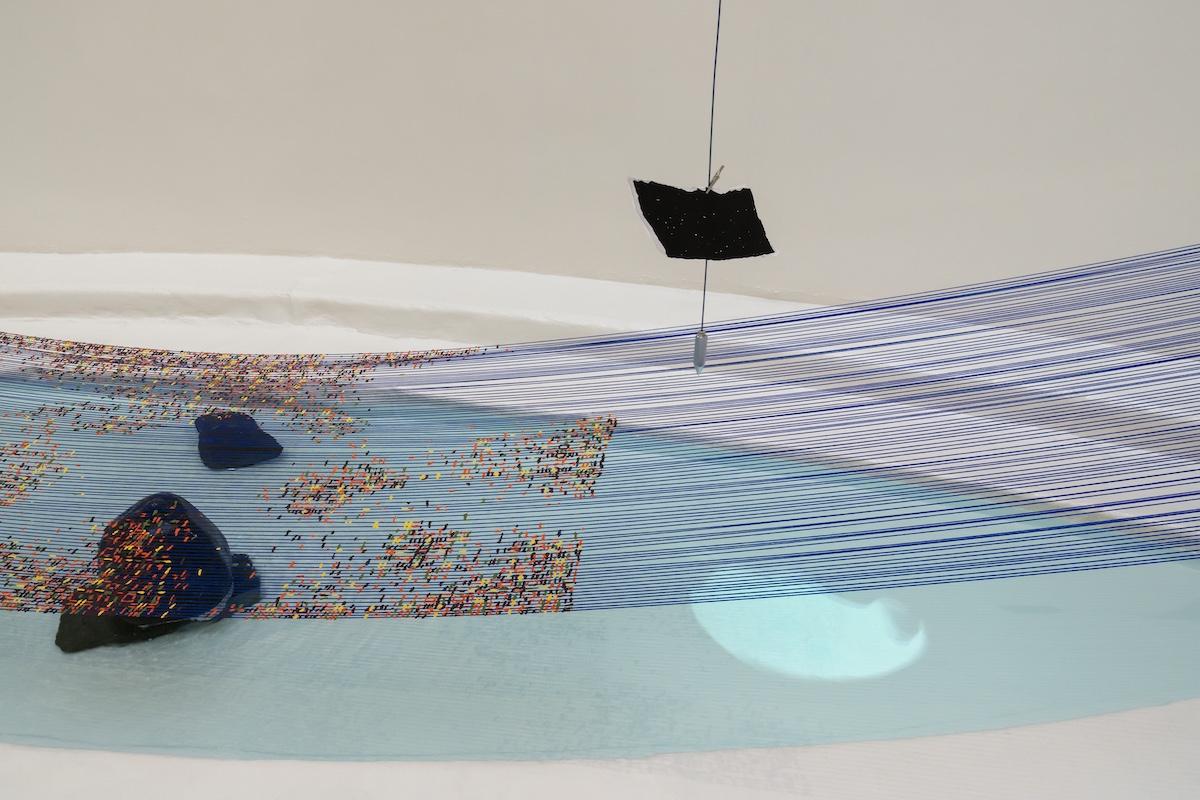Sze’s work always seems to be perpetually under construction and deconstruction, and you can be forgiven for being confused about whether the pieces here are in the process of being put up or taken down—an impression re-enforced by the presence of tools, ladders, clamps, safety fencing, and other accouterments of the workshop or building site. These items are simply some of the myriads of objects and scraps of imagery that seem to be tenuously bound together by chewing gum and baling wire. Spindly superstructures made of rods, dowels, and fishing lines suspend hundreds of these elements in a midair dance of debris, like centers that will not hold in a holding pattern.
Sze’s assemblages can be dazzling at times, and twee at others. Her central conceit, that all this busyness allegorizes information flow in the digital age, isn’t entirely convincing, but her command of materials is impressive.
































